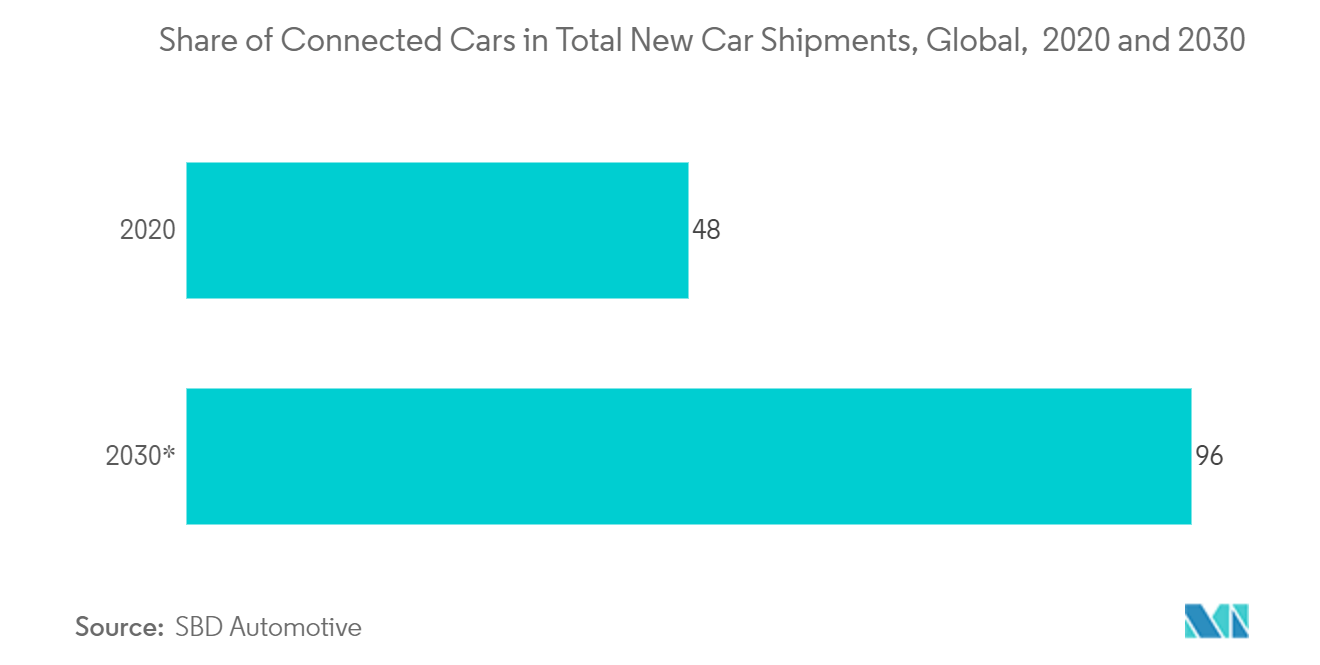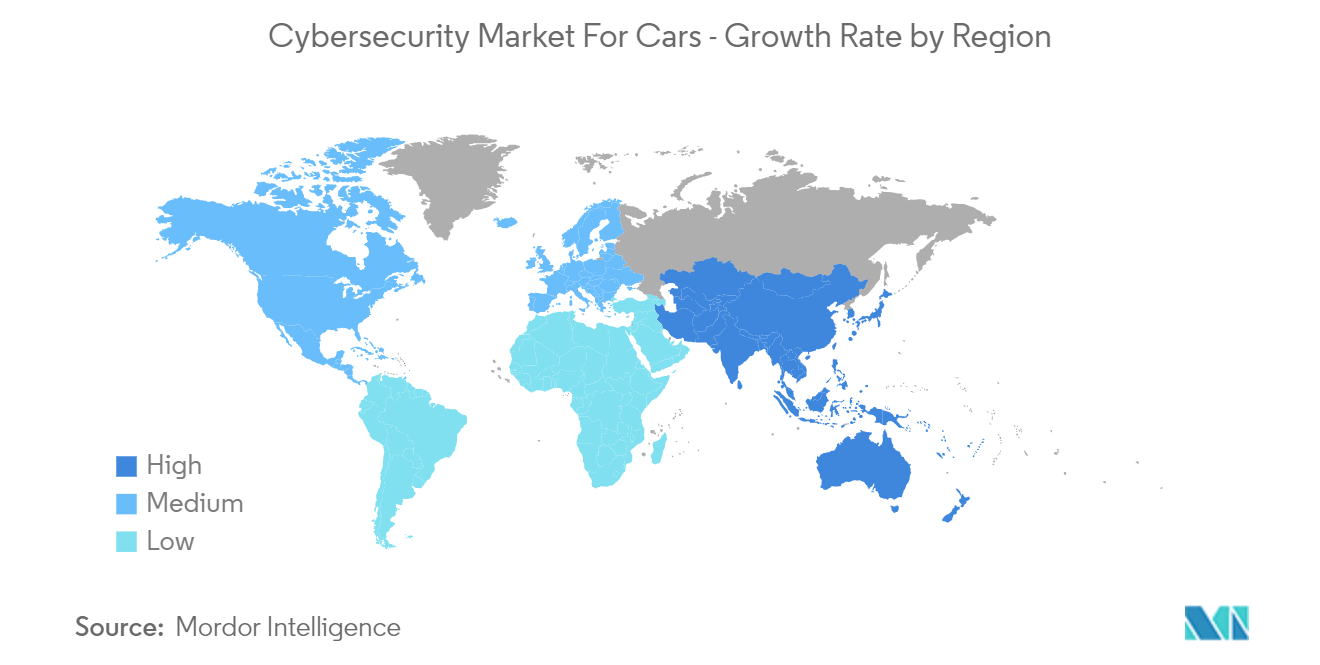Market Trends of Cybersecurity For Cars Industry
Rising Security Threats as More Technologies Get Integrated Into Cars is Expected to Drive the Market
- The automotive industry faces a significant challenge due to digitalization, such as big data coming from multiple connected sources. It is only getting bigger, making it increasingly difficult to analyze and protect the connected car against cyber threats. The only way to cut through the data clutter and identify potential attacks is by leveraging artificial intelligence and machine learning technologies for behavioral analysis of the data.
- The rapid growth in cyberattacks on the connected automotive industry is increasing significantly. From 2010 to 2018, the cyberattacks in the automotive sector increased by six times, and black hat attacks exceeded the number of white hats in 2018. Upstream's 2022 Global Automotive Cybersecurity Report includes a detailed examination of over 900 automotive cybersecurity events, including the Advanced sophistication of 2021's 240+ attacks; 84.5% of automotive attacks were carried out remotely, and a staggering 40.1% of incidents focused on back-end servers attacks.
- In 2022, China published a trial regulation on vehicle data management to standardize vehicle data processing to protect the lawful rights and interests of individuals and organizations, protect national security and public interest, and promote rational development and utilization of data collected from automobiles.
- Additionally, According to the survey, China ICVs collect at least 10 TB of data per day, with the data including not only information about the driver and passengers' facial expressions, movements, sight, and voices but also the vehicle's geographic position, interior, and exterior environment, and use of the Internet of Vehicles (IoV) to strengthen vehicle data security management to prevent and fix these security issues and potential threats.
- As sensors increase rapidly in connected vehicles, hackers can potentially steal personally identifiable information (PII) from the vehicle's systems, such as personal trip and location data, entertainment preferences, and even financial information. The more manufacturers release mobile apps for communicating with cars, the more they become targets for adverse factors.
- In the case of the Nissan Leaf, a compact five-door hatchback battery electric vehicle (BEV), security testers demonstrated how they could gain unauthorized access to control the heated steering wheel, seats, fans, and aircon remotely. The increasing security vulnerabilities in the Android and iOS mobile operating systems are also becoming a concern. These instances would require a need for robust cybersecurity systems for cars.

North America is Expected to Hold Significant Market Share
- The National Highway Transportation Safety Administration (NHTSA) is one of the regulatory bodies in the region overseeing the standards in security and safety of connected cars and released the 5G FAST Plan. This plan incorporates three key components: updating infrastructure policy, pushing more spectrum into the marketplace, modernizing outdated regulations, Vehicle-to-Everything (V2X) environment data exchange, and High-speed communications support Vehicle-to-Vehicle (V2V). Such data exchange allows autonomous vehicles to accept data beyond their onboard sensors’ physical range.
- North America is one of the major automotive markets and holds a significant demand for connected cars; the region has observed a slump in demand similar to the global market since 2019; however, the demand is expected to pick up over the coming years. For instance, according to BEA, in 2021, the US's light-vehicle retail sales stood at 14.9 million units.
- Moreover, over the next three years, it is predicted that over 85% of the cars sold in the US are anticipated to be secured over the Internet. General Motors' OnStar platform was one of the country's most widely used software platforms and security systems. The country's growing adoption and penetration rates augment the demand for cybersecurity.
- Furthermore, US car sales of Japanese brands are up 8.6%, increasing their market share to 38.5%, the highest since 2010. European brands are up 10.5%, increasing their market share by 0.7 percentage points to 10.6%, a new yearly high and the first time they have reached double digits. South Korean brands surpass all others, increasing their market share by 1.5 percentage points to 9.9%.
- The demand for electronics in the automobile industry in this region has expanded rapidly. The increased usage of electronics in vehicles has rendered them more vulnerable to hackers. Cyberattacks are common on electronic components used in telematics, infotainment, powertrain electronics, body electronics, communication electronics, and ADAS systems. As a result, stakeholders across this region have begun investing in cybersecurity solutions to provide robust electronic automobile platforms.


